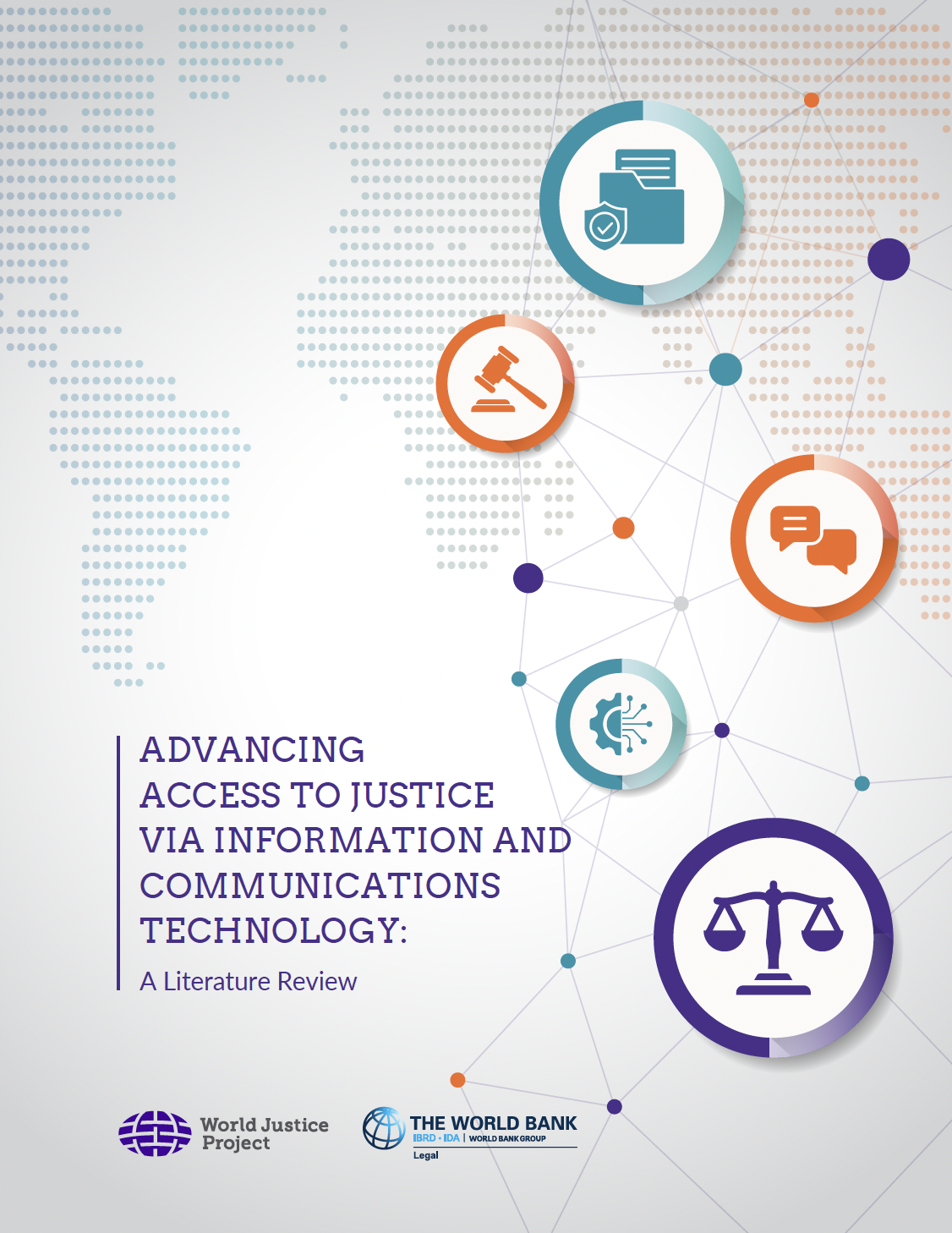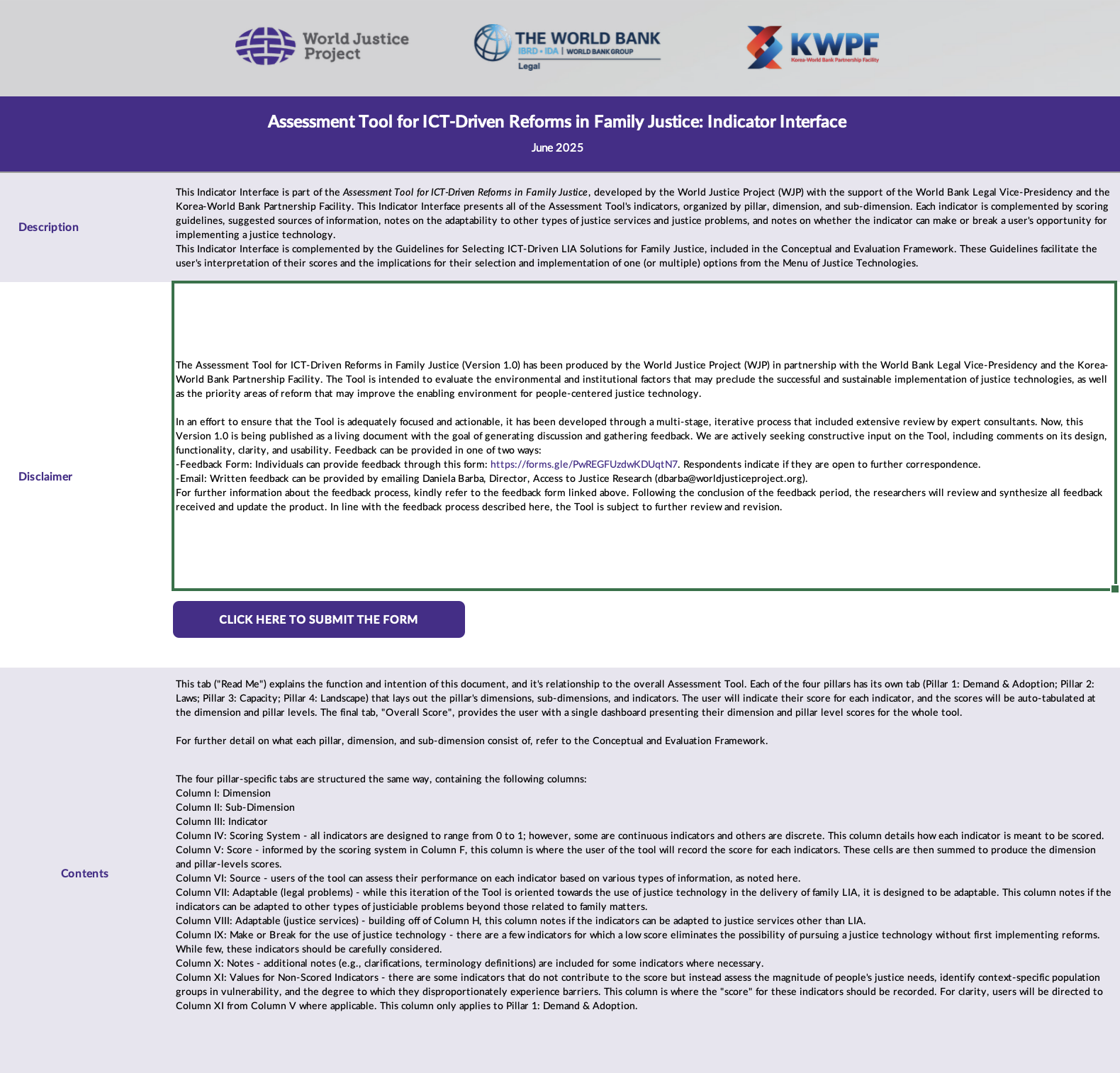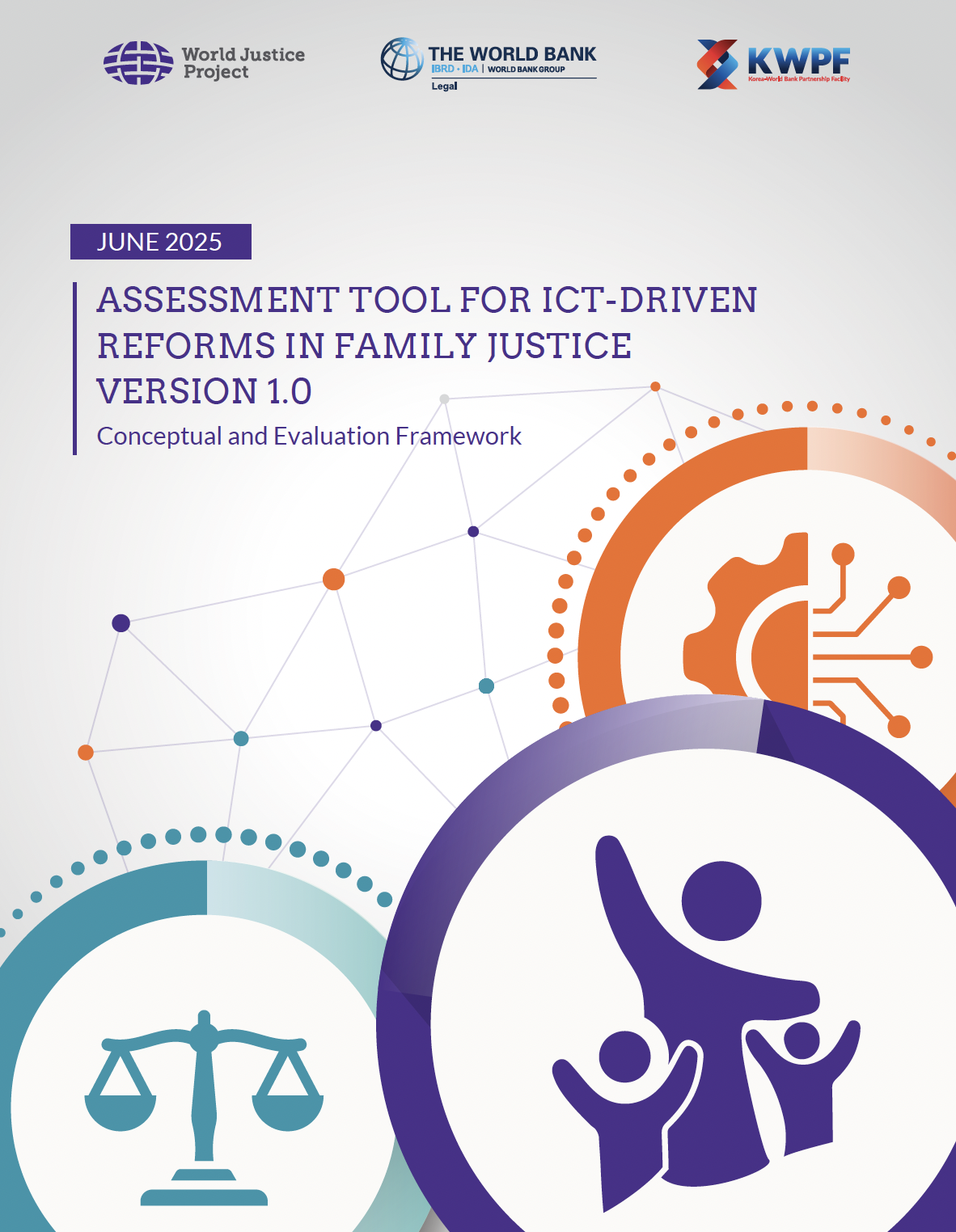Recent years have seen an explosion in technological innovation: from smart phones and mobile applications to artificial intelligence and machine learning and everything in-between, ICTs are changing the ways people interact with one another and the world.
These innovations are influencing the justice sector as well: around the world, justice technologies ranging from legal information websites to applications of generative artificial intelligence are evolving the delivery of justice services. However, despite the increasing frequency with which justice technologies are utilized, there is insufficient systemic understanding about how ICTs can be most effectively leveraged to improve the experiences of individuals with justice needs and ultimately advance people-centered justice.
The World Justice Project, in partnership with the World Bank Legal Vice Presidency and the Korean Legal Trust Fund, is pursuing a multi-stage project oriented towards supporting the use of justice technologies. As the first product of this collaboration, we published a mapping of justice technologies that follows a people-centered approach:
Access to Justice via Information and Communications Technology: A Literature Review
Informed by an extensive literature identification and review process, this report presents a comprehensive, people-centered analysis of existing research on justice technologies—the where, when, why, how, and by whom of their development and use. In the context of an ever-changing technological landscape, a people-centered analytical framework is critically important to ensure justice technologies effectively serve their purpose of improving justice outcomes.
Access to Justice via Information and Communications Technology: A Literature Review, leverages a people-centered analytical framework to assess existing research on justice technologies. We find that:
- Justice technologies are used on both the supply and demand sides of the justice system, offering opportunities for both services providers and users.
- There is scarce systematic understanding of how ICTs can be most effectively leveraged, particularly to serve people with justice problems.
- The benefits offered by justice technologies are not without notable risks and barriers.
- Justice technologies alone will not close the justice gap. When they are developed and implemented in a people-centered way—that is, taking people’s needs and experiences into consideration—they can support the advancement of access to justice.
Read the full report here:
Assessment Tool for ICT-Driven Reform in Family Justice
WJP has leveraged the findings from the literature review to advance this project, diving deeper into understanding where, when, and how justice technologies can be used to improve access to justice, and how justice actors can make the most informed decisions around using these technologies.
The Assessment Tool for ICT-Driven Reform in Family Justice takes a user-centric, people-centered approach and applies it to the use of technology in the justice sector. It starts with a problem or a set of unmet people's justice needs, and taking into account the challenges in addressing these needs, it offers a systemic solution. In this application, the problem is that people do not have access to the information and assistance they need to address their family justice needs.
Limited intentionality in decision-making is a barrier to resolving these needs through ICTs, leading to inadequate adoption of technology. As a result, ICTs fail to address existing needs, increase inequality in access, or become unsustainable due to a lack of necessary planning and partnerships.
The Tool contributes to filling those gaps by providing support to assess the potential barriers to implementing and adopting ICTs that address justice needs, as well as guidelines on what measures to take to overcome these barriers.
In an effort to ensure that the Tool is adequately focused and actionable, it has been developed through a multi-stage, iterative process that included extensive review by expert consultants. Now, this Version 1.0 is being published as a living document with the goal of generating discussion and gathering feedback. We are actively seeking constructive input on the Tool, including comments on its design, functionality, clarity, and usability.
Feedback can be provided in one of two ways:
- Feedback Form: Individuals can provide feedback through this form: https://forms.gle/PwREGFUzdwKDUqtN7. Respondents indicate if they are open to further correspondence.
- Email: Written feedback can be provided by emailing Daniela Barba, Director, Access to Justice Research ([email protected]).
For further information about the feedback process, kindly refer to the feedback form linked above. Following the conclusion of the feedback period, the researchers will review and synthesize all feedback received and update the product. In line with the feedback process described here, the Tool is subject to further review and revision.




